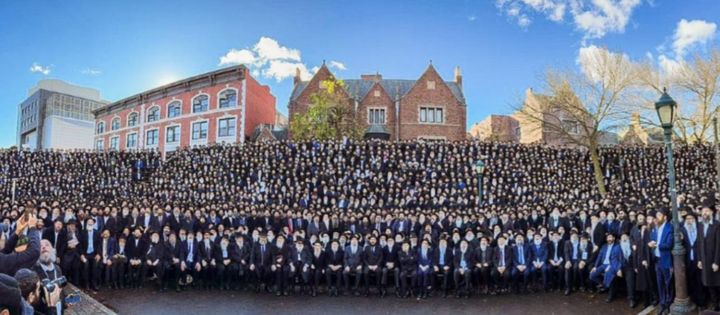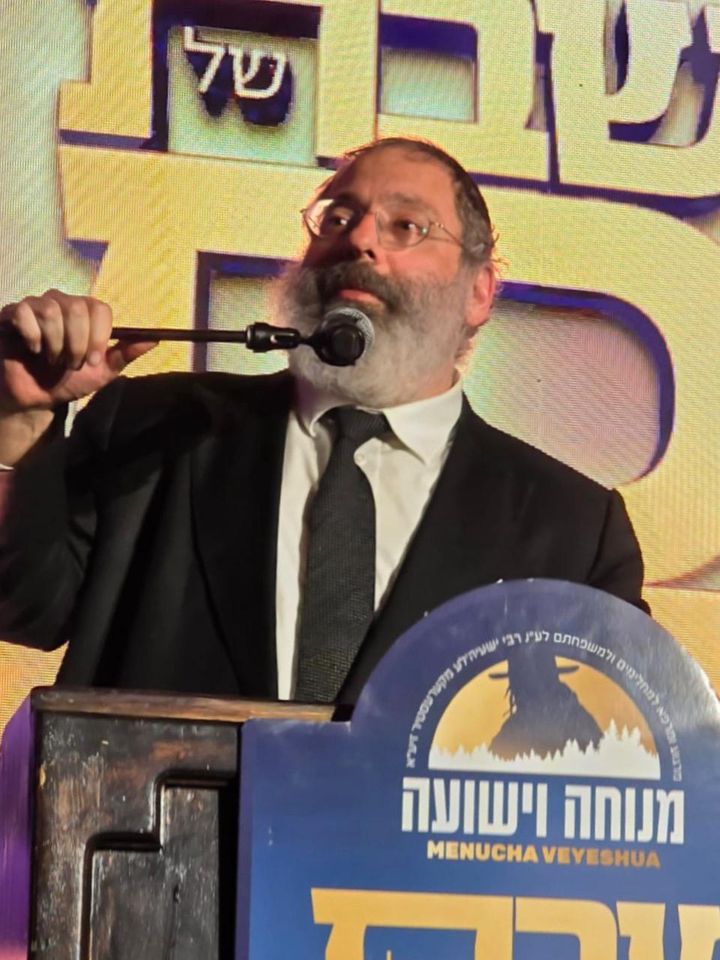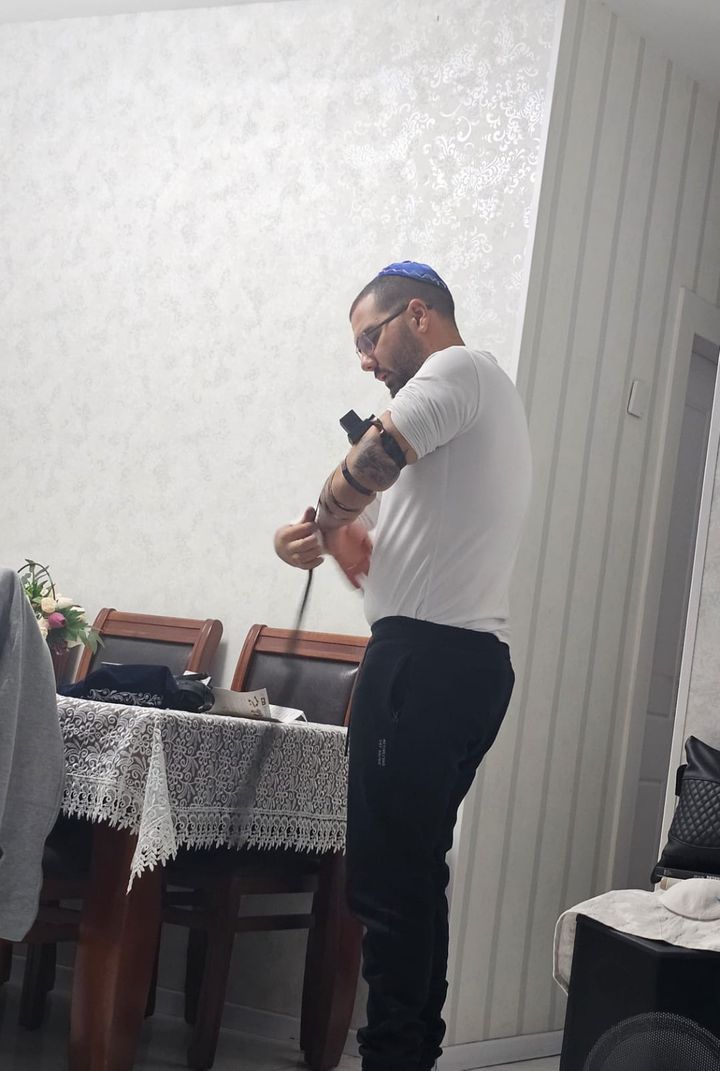

Posted on 11/24/25
“Who are you, and where are you a shaliach?” That’s how every conversation began at the international conference of Chabad emissaries held recently in New York.
Then came the answers, one after another: “Mendy, shaliach in Thailand.” “Yossi, shaliach in Tel Aviv.” “Shmuel, shaliach in Siberia.” After hearing this repeatedly, I found myself almost addressing other people the same way out of sheer habit.
But perhaps that instinct wasn’t mistaken. Maybe each of us really should be asking ourselves that very question: Who am I, and where am I a shaliach? Because in a deeper sense, every one of us is an emissary.
A mother preparing school lunches for her children is fulfilling a mission. So is a farmer working in his field. In every small action throughout the day, we can recognize this role. We were all sent into this world, a soul within a body, with a unique purpose that God has entrusted to us, shaped by the circumstances of our lives.
Many people walk away from this annual gathering struck by the scope and strength of the Chabad movement. And that admiration is well deserved. But the Lubavitcher Rebbe’s true innovation was the very concept of shlichut—that emissary work is not limited to the 6,500 official Chabad shluchim who pose for the annual group photo. Everyone who sees that picture is invited to ask themselves:
Who am I, and where am I meant to be a shaliach?
Preserving the Unity
Rabbi Y.Y. Jacobson spoke at the special trip to the US for 53 bereaved families from Israel organized by Menucha VeYeshua and led by Mendy Kenig. Addressing the families together with local participants, he said: “I remember arriving in Israel after October 7th. I met a young man, a survivor from Kibbutz Be’eri, and he hugged me and said: ‘Every Jew I meet, I just want to hug him!’
“I remember the atmosphere then; there was a very distinct frequency in the air, a sense of Jewish unity, of a deep understanding of who we are and who the enemy is. Despite all the differences among us, people genuinely wanted to embrace every Jew. That deep, shared Jewish point was revealed.
“It was a moment of great clarity, a moment of profound truth. I am asking all of us to return to that feeling. To preserve it.”
Grief and Celebration Interwoven
Lilach Vardi wrote to me that she has a story “about continuity and taking responsibility just like in the parashah.” This is what she shared:
“Meni Godard, 73, one of the beloved figures of Kibbutz Be’eri, was kidnapped and murdered on October 7. A few months after his abduction, when the family still had no information about his fate, they joined dozens of other hostage families in the ‘Tefillin Campaign.’ They published a simple request: that any Jew who did not normally lay tefillin should lay tefillin in Meni’s merit.
“My brother, Avichai Yosef, who typically did not put on tefillin, volunteered. He felt a deep connection to Meni and said, ‘For him, I’ll do it.’ He received the tefillin with emotion, and from that day on, he put them on daily, without missing a single morning (except, of course, on Shabbat). It became a quiet vow of love, brotherhood, and meaning.
“And now, two sentences that I can hardly believe I am writing one after the other: This week, Meni’s body was returned and he was laid to rest. This week, my brother, who had been searching for his other half, got married. On the happiest week of Avichai’s life, Meni’s body came home. His family sat shiva as we celebrated the sheva brachot.
“I feel a thread connecting my brother, who lives in Bat Yam, with the people of Be’eri, binding joy to sorrow, and the parashah’s message of Jewish continuity to our own unfolding story.”
Condolences to the Godard family. And mazal tov to Avichai and Mor.
The Tent, the Well and the Ladder
Three powerful symbols are associated with our nation’s Avot: Avraham, Yitzchak, and Yaakov. Each one represents a different spiritual path, a different way of serving God, and a different message for our own lives.
Which image is most closely linked to Avraham Avinu? A tent. A tent open on all four sides to anyone who is hungry, thirsty, or weary. It is a symbol of hospitality and generosity, a home that is always open, where travelers find food, comfort, and an introduction to faith, kindness, and tzedakah.
And Yitzchak? If Avraham’s tent is horizontal, spread wide to welcome the many wayfarers, Yitzchak’s symbol is vertical: the well. Yitzchak re-dug the wells his father had dug before him, teaching us perseverance and spiritual depth. The message endures: meaning often lies beneath the surface. Even when the path to inner clarity is blocked by sand or debris, if we keep digging and refuse to give up, sweet water awaits.
And Yaakov Avinu, whom we accompany to Charan in this week’s Torah portion, what is his symbol? After Avraham’s outward-reaching tent and Yitzchak’s inward-reaching well, Yaakov’s symbol is the ladder from his famous dream in which he saw “a ladder on the earth, and its top reached the heavens.”
Yaakov teaches that this world and the next need not be separate. There is a constant link between the physical and the spiritual, between what we see and what is hidden.
Rebbe Nachman of Breslov explains: “A ladder standing on the ground while its top reaches heaven—that is the essence of human striving.” Our task is to connect earth to heaven, to infuse the ordinary rhythm of our days with holiness and purpose.
Yaakov Avinu entrusts us with this mission. May we each succeed in elevating our daily lives and building our own ladders upward.



Rabbi YY Jacobson


Avichai laying tefillin in memory of Meni Godard, z'l, H'yd

Avichai Yosef with his bride